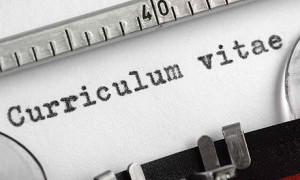تدریس خصوصی آیلتس بهترین استاد آیلتس استاد آرین دکتر آرین کریمی 09125000158
دوره آمادگی آیلتس فشرده کلاسهای آمادگی فشرده آیلتس مرکز تخصصی آیلتس آیلتس چیست کلاس خصوصی آیلتستدریس خصوصی آیلتس بهترین استاد آیلتس استاد آرین دکتر آرین کریمی 09125000158
دوره آمادگی آیلتس فشرده کلاسهای آمادگی فشرده آیلتس مرکز تخصصی آیلتس آیلتس چیست کلاس خصوصی آیلتسچگونه رزومه کاری انگلیسی بنویسم؟ How to Write An Effective Resume and CV
Global
labor trends show that millions and millions of people every year are
unemployed, and should they seek jobs, they would face rigorous
screening processes. This is due to changes in the operations,
structures, and spending of many companies caused by unpredictable
economic circumstances and technological developments replacing a huge
part of the human force. Adding to the worry of any job applicant is the
tight competition with other job seekers.
One crucial way to
beat those odds is to stand out. To be noticed in a crowd of names and
faces is to make your first impression unforgettable, and this first
impression is in the form of a piece of paper which celebrates the
history of your milestones and feats: your resume.
The Six-second Look: Why Does A Resume Need to be Catchy and Effective?
A
study by TheLadders, a job-matching service and employment site in New
York, reveals how recruiters actually look into piles of curriculum
vitae (CV) and resume. These are the company’s findings:
“…recruiters spend about 6 seconds before they make the initial “fit/no
fit” decision. That means prioritizing information is essential.”
“…recruiters tend to follow a consistent visual path when reviewing
both resumes and online profiles, so an organized layout is crucial.”
“…professionally written resumes have a clear visual hierarchy and
present relevant information where recruiters expect it, these documents
quickly guide recruiters to a yes/no decision.”
Hence, a well-polished resume with enough information that matches the specific job requirements is likely to get noticed.
Today,
this guide will take you to the nitty-gritty of writing an effective
resume. This is not a magic wand that will transport you to the office
of your dream job, but this will detail the essentials that will help
refine your first impression to your potential employer and possibly
your confidence to share what you have been achieving all along:
The difference between a resume and a CV
The CV
The Resume
Types of Resume
Different Parts of a Resume
Tips on Writing a Resume
The Difference Between A Resume and A CV
A
resume is a formal document that showcases the basic yet crucial
information about a person’s education and professional experience.
These details are expected to be relevant to the requirements of a
particular position one is applying for. According to The Bates College
in Maine, a resume is typically for job seekers in the field of
business, industry, governmental, and non-profit jobs. Its purpose is to
help you land an interview.
On the other hand, the San Francisco
State University stresses that a CV is longer and more detailed. In
fact, a Ph.D. student may come up with a two-to-three page CV while
those with extensive professional experience might produce seven to
eight pages. Moreover, a CV is often for graduate school and academic
positions, such as faculty positions, internships and even grant,
scholarship, and fellowship applications. Also, there are professionals
sending CVs to companies abroad since they have no idea what Human
Resources are looking for in such documents yet.
The CV
In
essence, a CV can be compared to a huge database of a person’s
achievements. The University of North Carolina-Chapel Hill shares that a
standard CV has the following elements:
Name / Contact Information
: your contact information or contact information of your current
office or place of employment (unless your job application is not
confidential)
Areas of Interest : different fields, expertise, or academic interests
Grants, Honors and Awards : grants received, honors for previous work, or awards given for teaching service.
Publications and Presentations : published manuscripts, articles, abstracts, technical papers, and books and presentations given at conventions and conferences. This category can be split into two depending on the length of the information.
Employment and Experience : lists of teaching experiences, laboratory/ field/volunteer work, leadership roles, or other relevant experiences.
Scholarly or Professional Memberships : professional organizations of which you are a member or officer
References
: persons who can recommend you and properly describe your work
attitude and competence, with their position, institution and contact
information.
Others are Professional Certification
(certification, licensure, endorsements, and special training), Academic
Service (advising, university involvement, outreach, and university
assignments) and Professional Activities (conference participation,
conference presentation, invited lectures, and conference leadership).
IELTS WRITING COURSE
BY MASTER ARIAN

